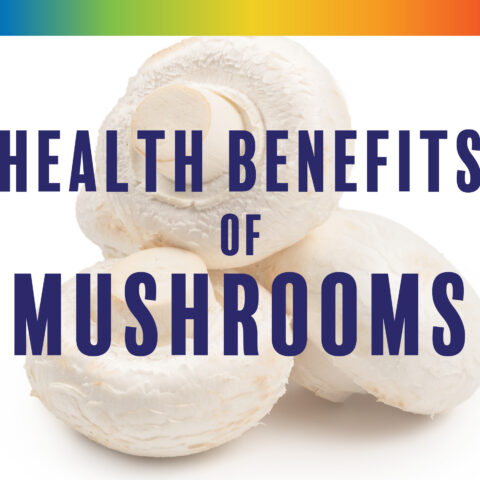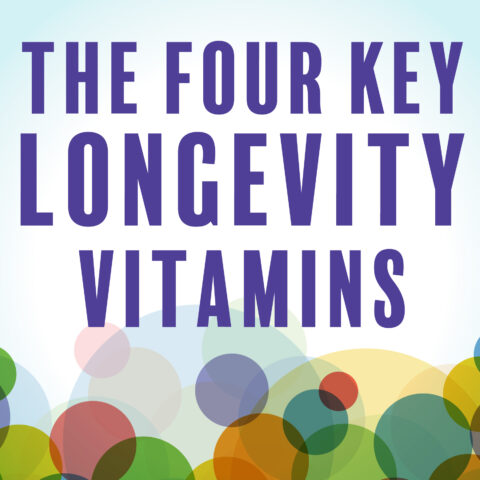Paleolithic Aging: Exercise for Brain, Biceps, and Longevity

The ideal diet remains controversial in health circles, but the benefits of exercise are almost universally acknowledged. And while many associate exercise with weight loss or toning up, evidence is quietly accumulating that our brains and immune systems need it as much as our glutes, abs, and pectorals.
A November 2019 study published in the Journal of the American Geriatric Society, looking at the long-term effects of diet and exercise on neurodegeneration showed how even modest exercise can help stave off dementia. It is just one of many examples that remind us how important exercise and movement are to overall brain health. [1]
The study measured exercise- and diet-driven improvements in neurocognition (including executive functions, memory, language and fluency, and clinical dementia rating) over six months and in a one-year follow-up. The results have strong implications for older, sedentary adults. Progress recorded after six months was still clearly measurable at the one-year mark, even if exercise was abandoned.
The study also included a “heart healthy” dietary intervention called DASH (Dietary Approaches to Stop Hypertension), similar to the Mediterranean diet. This aspect of the study targeted cardiovascular disease (CVD) factors present in each participant.
Would an ancestral diet have shown competitive results? A September 2019 study published in CUREUS, which looked at a carbohydrate-restricted diet and exercise on cognitive function also showed success (including improvement of the critical executive functions) using a low-carb Paleolithic Diet and exercise. [2]
Both studies conclude that the protective and cognition-enhancing effects of diet and exercise, taken together, exceed the benefit of either by itself.
The importance of “executive function”
The importance of executive function to overall cognition is critical. Adele Diamond, a professor of neuroscience at the University of British Columbia described them in her review article from the Annual Review of Psychology: “[EFs] make possible mentally playing with ideas; taking the time to think before acting; meeting novel, unanticipated challenges; resisting temptations; and staying focused.” EFs allow for many higher-level functions such as inhibition, working memory, and cognitive flexibility. Without them, mental decline is inevitable. [3]
She also states that a lack of exercise, among other factors (including stress and lack of sleep), compromise EFs. [3]
EFs appear to underlie most of what we might consider “personality,” and keep us from defaulting to “autopilot” when selecting actions. EFs help us behave in context, allow us to combat bad habits or adopt good ones (like a Paleo Diet), and make difficult but worthwhile choices. Sadly, EFs are often early casualties when Alzheimer’s or other dementias set in. [4]
Different methodologies, similar results
Both of the 2019 studies exploring diet, exercise, and cognitive function demonstrated EF improvement through exercise and diet, even though the demographics and methodologies varied.
The 160 participants in the study exploring the DASH diet were middle-aged, sedentary, had at least one CVD risk factor, and all displayed “cognitive impairment with no dementia” or CIND. CIND is not a dementia diagnosis but is considered dementia-predictive. The exercise groups performed 35 minutes of low impact aerobic exercise (walking or biking) three times per week for six months.
The Paleolithic Diet study measured a smaller group (12 individuals ages 20-40 with metabolic syndrome) over a shorter period, with more intensive exercise. Each participant engaged in high intensity interval training (HIIT) on three days per week for four weeks, including 6 x 60-second cycling intervals at 90 percent of maximum heart rate.
Both studies measured diet-only versus diet-and-exercise groups and showed the highest rate of cognitive improvement with the diet-and-exercise intervention. The DASH study, with its one-year follow-up, also showed that the improvements, while possibly attenuated if exercise stopped, were still measurable compared to the non-exercise baseline.
The improvement in executive function across a wide spectrum of age groups in both studies clearly shows the importance of regular exercise to build, improve, and preserve mental acuity—at any age.
Exercise and other diseases
Regular exercise has been repeatedly shown to improve many other serious health conditions. Let’s take a closer look.
Cancer
A 2019 Mayo Clinic article entitled “Your secret weapon during cancer treatment? Exercise!,” [5] outlined how exercise offers a range of benefits, from improving well-being during treatment to decreasing tumor size. In 2018, The Clinical Oncology Society of Australia formally adopted treatment guidelines to include exercise as integral to cancer treatment [6] based in part on an extensive review exploring the efficacy of exercise on cancer treatment. [7]
Diabetes
Exercise improves insulin sensitivity and combats common Type II diabetes co-morbidity factors (obesity, high blood pressure). [8-9] A position statement of the American Diabetes Association on exercise states: “The adoption and maintenance of physical activity are critical foci for blood glucose management and overall health in individuals with diabetes or prediabetes.” [10] The position statement cites 185 different studies and papers supporting these exercise recommendations.
Heart disease
The first sentence in a NIH/U.S. National Library of Medicine post in “Medline Plus” on heart disease reads: “Getting regular exercise when you have heart disease is important. Physical activity can strengthen your heart muscle and help you manage blood pressure and cholesterol levels.” [11] The preventive benefits of exercise for heart disease are widely acknowledged. Sadly, one recent study in Frontiers in Cardiovascular Medicine (September 2018) concluded that while exercise shows “unequivocal benefits” and “mortality risk reduction,” the vast majority of Americans simply don’t do it enough. [12]
Immune system
Moderate exercise is widely acknowledged to boost the immune system and mitigate immunosenescence—the dysregulation of immune processes due to aging. [13] There is some debate about whether extended, intense exercise, elite endurance competitions and training, or active duty military deployments temporarily depress the immune system. A 2020 study published in the Exercise Immunology Review makes a strong case against this theory, noting that much of the evidence is epidemiological and that more randomized trials are needed. [14] Luckily, most moderate exercisers or sedentary older adults won’t reach this “elite” level of intensity.
A quick Google search will yield similar information for almost any health condition—especially chronic diseases such as obesity, metabolic syndrome, multiple sclerosis, arthritis, or hypertension.
Exercise guidelines
Many studies recommend working up to baseline goals of either 150 minutes per week of moderate activity or 75 minutes per week at “vigorous” levels as suggested by the Mayo Clinic. [5] Resistance training should be incorporated, ideally, at least twice a week.
Older adults should prioritize building, or at least maintaining, muscle mass through resistance or weight training to combat the silent enemy sarcopenia. This condition, the gradual loss of muscle as we age, predisposes us to disability, fall-related injuries, reduction in stature, and is linked to many chronic diseases—resulting in a shorter lifespan. [15]
New exercise programs should be adopted gradually. Over four years, for example, the author (currently 62 and employed full-time) went from two, 30-minute weightlifting sessions plus two to three days of walking 30 minutes each week, to four, 60-minute weight sessions (each followed by 30 minutes walking) plus two additional days of walking 60-90 minutes per week. Once or twice a month he and his wife take an extended hike of two hours or more.
The time investment per day can be challenging but should pay off in greatly reduced morbidity at advanced age. “Retirees” with more leisure hours available have a priceless opportunity to combat disease and extend the productive, assistance-free phase of their lives with moderate, consistent exercise.
Sedentary individuals, especially those with health issues, should always consult their physician before beginning an exercise program—but it’s never too late to start.
References
- Blumenthal, James A., et al. “Longer Term Effects of Diet and Exercise on Neurocognition: 1-Year Follow-up of the ENLIGHTEN Trial.” Journal of the American Geriatrics Society, vol. 68, no. 3, 2020, pp. 559–68. Wiley Online Library, doi:10.1111/jgs.16252.
- Gyorkos, Amy, et al. “Carbohydrate-Restricted Diet and Exercise Increase Brain-Derived Neurotrophic Factor and Cognitive Function: A Randomized Crossover Trial.” Cureus, vol. 11, no. 9. PubMed Central, doi:10.7759/cureus.5604. Accessed 8 Apr. 2020.
- Diamond, Adele. “Executive Functions.” Annual Review of Psychology, vol. 64, 2013, pp. 135–68. PubMed Central, doi:10.1146/annurev-psych-113011-143750.
- Newport, Mary T. Alzheimer’s Disease: What If There Was a Cure?: The Story of Ketones. Second edition, Basic Health Publications, Inc, 2013.
- “Your Secret Weapon during Cancer Treatment? Exercise!” Mayo Clinic, https://www.mayoclinic.org/diseases-conditions/cancer/in-depth/secret-weapon-during-cancer-treatment-exercise/art-20457584. Accessed 8 Apr. 2020.
- MPH, Monique Tello, MD. “Exercise as Part of Cancer Treatment.” Harvard Health Blog, 13 June 2018, https://www.health.harvard.edu/blog/exercise-as-part-of-cancer-treatment-2018061314035.
- Heywood, Reginald, et al. “Efficacy of Exercise Interventions in Patients With Advanced Cancer: A Systematic Review.” Archives of Physical Medicine and Rehabilitation, vol. 99, no. 12, 2018, pp. 2595–620. PubMed, doi:10.1016/j.apmr.2018.04.008.
- “Type 2 Diabetes and Exercise.” EndocrineWeb, https://www.endocrineweb.com/conditions/type-2-diabetes/type-2-diabetes-exercise. Accessed 8 Apr. 2020.
- Whiteside, David. Active into Your 90’s: Exercise and Paleo —. 22 Jan. 2018, https://www.paleo55plus.com/post/active-into-your-90-s-exercise-and-paleo.
- Colberg, Sheri R., et al. “Physical Activity/Exercise and Diabetes: A Position Statement of the American Diabetes Association.” Diabetes Care, vol. 39, no. 11, Nov. 2016, pp. 2065–79. care.diabetesjournals.org, doi:10.2337/dc16-1728.
- Being Active When You Have Heart Disease: MedlinePlus Medical Encyclopedia. https://medlineplus.gov/ency/patientinstructions/000094.htm. Accessed 8 Apr. 2020.
- Nystoriak, Matthew A., and Aruni Bhatnagar. “Cardiovascular Effects and Benefits of Exercise.” Frontiers in Cardiovascular Medicine, vol. 5, Sept. 2018. PubMed Central, doi:10.3389/fcvm.2018.00135.
- Nieman, David C., and Laurel M. Wentz. “The Compelling Link between Physical Activity and the Body’s Defense System.” Journal of Sport and Health Science, vol. 8, no. 3, May 2019, pp. 201–17. ScienceDirect, doi:10.1016/j.jshs.2018.09.009.
- Simpson, Richard J., et al. “Can Exercise Affect Immune Function to Increase Susceptibility to Infection?” Exercise Immunology Review, vol. 26, 2020, pp. 8–22.
- Volpi, Elena, et al. “Muscle Tissue Changes with Aging.” Current Opinion in Clinical Nutrition and Metabolic Care, vol. 7, no. 4, July 2004, pp. 405–10.
David Whiteside
David Whiteside devotes his time to researching and promoting awareness of Paleo and ancestral dieting in the senior community.
More About The Author



